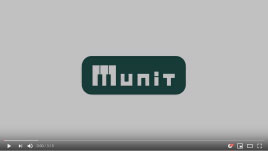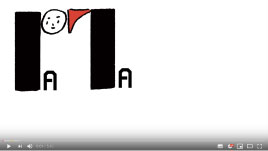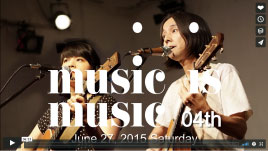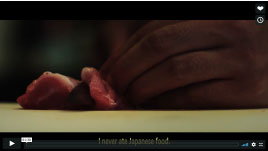On “Money after Money | Credit Game 2013”
Yukiko Shikata (Curator/ MaM)
I.
Since the latter noughts, social media has burst forth into our lives, and rippled through society, announcing previously unimaginable levels of information sharing, and forms of interpersonal interaction. In financial circles this took the form of “crowd funding” as, in the aftermath of the 2008 collapse of Lehman Brothers Inc., the subsequent bailout of the US financial system, capital vanished from markets. Whether with the public unrest epitomized by the Occupy Wall Street protests, or with much of the “Arab Spring”, a number of movements worldwide framed as push-back against the Ancien Régime have seen “social media” praised as being more useful to the have-nots than the haves. In Japan we probably draw the line at the 2011 Tōhoku earthquake, tsunami, and melt-down disaster trifecta, for a moment at which most people realized that many of the systems adopted in Japan’s modernization were no longer valid. My point is that these events only serve to reflect a social transformation which was already waiting to be born.
The Internet’s appearance in the latter 90s, and its rapid integration into our lives heralded a shift from consuming goods to circulating them, from appealing to scarcity to appealing to a “commons” of distributed and shared property. So if this is a shift from a 20th century system to a 21st century system, then what defines it? It’s first suggestion is in the ripples we see running through politics, economics, social systems, technology, and culture; ripples for which we seem to have few useful precedents. This is to say that there are no specialists to call. It is very much something that each of us must help to evolve through questioning our life choices, and trial and error, in a rhizomatic dialog with ourselves and each other. It must be built in the process of rebuilding society. Each of our talents and abilities contribute to its creation, by accumulating experience, and proofing for ourselves, and then sharing the results, and the various filtering processes that happen in this collective action. It is becoming the product of autonomous individual networks –– a smooth mash-up of inter-dependence and responsibility.
II.
Money allows us to commodify time and labor, it makes it freely portable, and exchangeable. It is the vessel of value. This logic is pervasive throughout post-modern “developed” Western capitalist nations: Money is what our societies are based on. Through stimulating desire we stimulate production, and consumption. Money is there at every step of this exacerbation chain, from the provision on labor to the “receipt” of the final product.
Along the way, of course, money ceased to simply be a vessel, or intermediary, in the exchange of goods and services. It is a thing unto itself. It is a technology with a code, based on confidence. Some point to the August 15, 1971 “Nixon shock” memorandum which “temporary” suspended the dollar’s convertibility into gold, but permanently discredited the international monetary regime established under Bretton-Woods. Some point to flaws inherent in capitalism itself. In any event, our current, collapsing regime might be linked to this detachment from actual limited supplies of precious gold, and innovations in new financial instruments, leading to a seemingly endless opportunities to cantilever the confidence in monetary instruments away from value as limitlessly as one might design unbuildable architecture with computer code. The administrations of Thatcher and Reagan were only too happy to cash in, and promote the deregulation of controls on the production of these financial instruments, to de-link capital from labor, and disenfranchise workers globally by flat-earthing their economies. Simultaneous advances in computing and telecommunication technologies meant that the rise of the Internet was only the public face of a new flood of value transactions washing back and forth across the planet, capable of manufacturing wave after wave of financial crisis, the Lehman Brothers crisis being but one of them.
And as the financial world accelerated into the stratosphere, to launch an ever smaller number of us at the tip of its fuselage into unseen heights of mega-wealth, it jettisoned the weighty wetware world behind it, 99% of us else fell back to earth, where here, we increasingly turn to the immaterial extra-financial worth of things such as society, and culture.
I curated this exhibition to create a point of communal contemplation about the possibilities of value exchange and portability being born in the present day, amidst the sense that our financial inheritance is bankrupt.
Andy Warhol and Joseph Beuys are both charismatic post-war artists, working within the capitalist systems of the US and West Germany. The works on view in this exhibition were both produced around 1980, at the moment of this rift, as the financial sector declared autonomy from labor, and with it speculation in the art markets surged. Both works reflect critical practice within art: Warhol’s $1 in its superficial control of the codes of consumer society, and Beuys’s “ART=CAPITAL” by suggesting creative capital which doesn’t depend on the capitalism but rather based on the idea being inherited from the associative economics of Rudolf Steiner.
The exhibition continues with a third asynchronous work, the documentary film “Money Man” (1992), about the artist J. S. G. Boggs, who inserts artistic “notes” into circulation, (and the rest of the show is structured around works produced in the aftermath of the Lehman Brothers debacle). Boggs, whose work plays on questions of a barter economy, is resonant with Christian Lahr’s “MACHT GESCHENKE: DAS KAPITAL” (2009 – ca. 2052), which continues to “donate” to the German Federal Ministry of Finance 40 years after it’s demise. Both inspire by superimposing actual societies and economic systems, and remain large-scale actual works, which continue to this day. Ellie Harrison’s “The History of the Financial Crises” (2009) provides a metaphor to experience economic crises which are huge and serious but can be hard to grasp. Julieta Aranda + Anton Vidokle’s project “time/bank” (2009-) practices economic disbursements without relying on existing financial instruments.
Nitipak Samsen’s “TRAIL$” (2010) and UBERMORGEN.COM’s “Everything is Always” (2013) both question the future of money based on digital networks to the viewers, each by fiction and by diagrams. exonemo has developed virtual money project on iPhone application, as a prototype which in the future used to exchange real money, as “MaM (Money after Money)”’s special project, at GYRE Building (where exhibition site locates) and surrounding areas. This project will set new front for them.
While the Warhol and Beuys works, both produced around 1980, are finished commodities bought and sold in art markets — much of the other works exists mostly as experiments or work in progress projects, in positions of detachment from the existing economic system, and as such have a different position from which to question the relationship between art and society. The artists create moments for shared time, meaning and value, for artistic process and social relations, rather than committing something to production.
III.
Capitalism’s effect on the pursuit of modernization has taken the form of a homogeneous temporal and spatial exploitation of the planet’s resources in a supremacist promotion of materialist technological determinism. Yet irrevocable crashes, whether Lehman Brothers or the Fukushima Daiichi melt-down, do have the performative function of providing moments when “the 1%” are no longer the sole voices designating the global course of action, and as such let’s enjoy this fleeting surplus of mindspace and explore the philosophical and practical basis of the today’s global economy.
The political philosophers Antonio Negri and Michael Hardt who advocate democracy by the “Multitudes” — diverse groups of people with diverse interests — wrote in their book “Commonwealth” about the two common wealths: first the common wealth of the material world (nature’s bounty), and the second the results of social production (knowledge, language, codes, information, affects, etc.), and suggested that the importance lies in the maintenance, production and distribution of the common in both ecological and socioeconomic frameworks. The economist Amartya Sen too asserts the necessity of the market economy’s functioning by “democratic governance of various systems”.
Consumption vs. circulation, desire vs. ethics, interest for the few vs. interest for the masses, sufficiency today vs. investment for the future… We’ve been too focused on the first half of each equation. Now is the time to put our weight behind the latter halves, and prompt the changes. Perhaps that is what we find in the practices of these artists, the new ways of apprehending and visualizing society they proffer?
To create new economic value from culture –– this is the new economic model coming to the markets: Values which are networked and created beyond goods, information, and people. Here is our momentum for transforming the status quo.
I hope “Money after Money – Credit Game 2013″ becomes a catalyst for uncovering new possibilities, new value instruments, new ways of confidence, among the visitors to the exhibition. (Curator/ “Money after Money | Credit Game 2013”)
○”Money after Money | Credit Game 2013” is sequel to the exhibition “Credit Game” (NTT InterCommunication Center [ICC]), guest-curated by Masu Hiroshi Masuyama in 2001.
(translated by David d’heilly)
–> back to “Money after Money” website


 ジャズ作曲家、挾間美帆、CD制作助成
ジャズ作曲家、挾間美帆、CD制作助成
 音楽家、網守将平、CD・コンサート制作助成
音楽家、網守将平、CD・コンサート制作助成
 音楽プロデューサー、牧村憲一によるコンサート、レクチャー・シリーズの制作
音楽プロデューサー、牧村憲一によるコンサート、レクチャー・シリーズの制作
 和食を世界各地の子供に食べてもらうショート・ムービー“オマカセ・フォー・キッズ”の制作
和食を世界各地の子供に食べてもらうショート・ムービー“オマカセ・フォー・キッズ”の制作